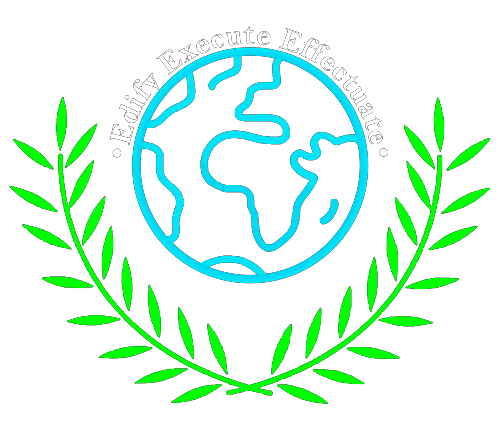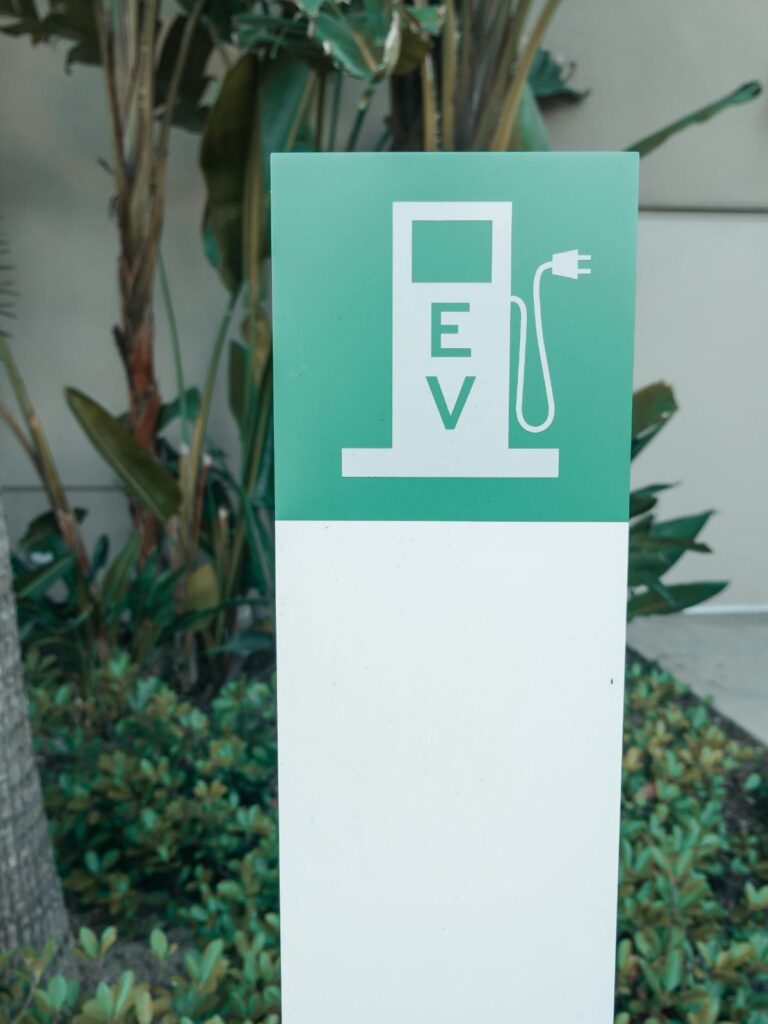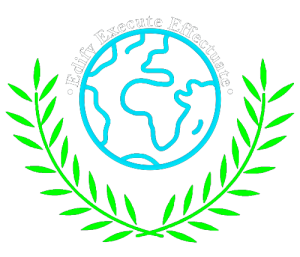Article written by Mansi, Jeanette and Akash
Introduction
The introduction of collaboration and collectiveness between states by liberalism proponents paved cooperation of countries to harness global issues such as poverty, climate change, economic depressions and other global concerns. UN 17 SDGs along with their 165 targets have become the beacon of hope to create a more sustainable environment, however, the impetus to achieving these goals is cooperation between states. This article aims to focus on target 17.6 enhance North-South, South-South and triangular regional and international cooperation on and access to science, technology and innovation, and enhance knowledge sharing on mutually agreed terms (United Nations, 2015). India and Global South, a new hope. It provides a nuanced discussion on how India collaborates with other developing countries through bilateral, multilateral, and regionally to address matters on science, technology as well as innovation in these contemporary times. India as a developing country, is on a race to advance economically, scientifically, politically and in all other aspects. Over the years, it has witnessed vast changes of digitalization, economic boom, and technological advancement in various sectors. Situated the Southern part of Asia, it forms part of the Indian Subcontinent, along with its neighboring countries categorized under South Global Countries: Pakistan, Afghanistan, Nepal, Bhutan, Bangladesh, and Sri Lanka. India has coordinated with these countries and other Southeastern Asian countries over the years to address common regional issues through BIMSTEC, and other avenues working towards a sustainable Indian Subcontinent, aiding its neighbors to implement sustainable development goals and targets even though it had never been a smooth cooperation. The article takes a close look at how India has worked with Sri-Lanka, Bangladesh, and Myanmar to address common problems of trade, Science and Technology through various frameworks like becoming a major investor regionally. The FDI provided by India has been a significant to STEMs to those countries deemed as recipients. Moreover, there is from Asia to South America; Brazil. India and Brazil come a long, these two do not only have bilateral relations but they also share international platforms like G20, BRICS and more, However, the article explores India-Brazil relations bilaterally, delving into their collaboration on creating a better future together in Science and Technology Sector.
Literature review
The term ‘Global South’ was coined by the political activist “Carl Oglesby” where he pointed out that the global south dominated by the global north through political and economic exploitation. The division of north and south still existed in the form of developed and underdeveloped/developing nations. Even though these two are apart, they conjoined through Brundland Commission that was adopted in 1987 that became a steering wheel working towards “our common future”, guiding how to work hand in hand towards sustainable development.
A recent event of the of Indian foreign policy toward global south where Indian engagement in regional forum like Caricom, Pacific Island Forum and African Union in G20 a new member shows the motto of “collective effort for inclusive growth” (Sabka Saath Sabka Vikas) would be the driving force also act as a bridge between north and south. The SDG goal no. 17 “partnership for goal” where broadly focus on development of global south collaboration with regional or developing countries of south and developed nation of global north to bring them on frame of common goal. We used subtopic SDG 17.6 for research where we elaborate challenges and role that India play to uplift global south with main focus on the triangular cooperation and South-South cooperation with special emphasis on technical and economic cooperation under the BAPA (Buenos Aries Plan of Action).
Challenges
- Trilateral cooperation in this policy developed country provide essential funding for underdeveloped nation through developing were developing nation provide management and technical expertise. For this developing nation have the capability of technical expertise and experience for quality co-operation also political will with active involvement in world politics. In research we used India as a primary developing nation which have the political will also technical expertise to guide and manage the project. India resent engagement to global south multilateral forum and strong voice in support of global south on funding issue in COP29. Project like resilient infrastructure, international solar alliance, where India is a founding member for multilateral institution need strong diplomatic presence, it come from strong leadership commitment that shown by the Indian government this alliance which mention above fill the gap of north south both alliances have the combination of developed and developing nation great for sustain development
- For sustain growth required reliability in international system engagement between two nation is totally based on common interest for this reason finding reliable could be hard task here for define a reliable partner we focus on Indian foreign policy like “one family” the theme in G20. Political challenges come in international system where nation was fought to gain control each other where small nations used as tool to achieve so that term reliability term look foggy.
- All projects were outsourced to other nation company that create impact the sustain development problem face by the global south nation this issue overcomes through localization of policy where we build program like capacity building project with local supply chain with low solution without time consuming. We used India domestic policy for SDG was try and tested with limited resource and quality expertise generated while dealing with policy implementation policy like PM Ujjwala, Jan Dhan, Startup India etc are policies maintain by NITI Ayog nodal agency NITI Ayog also publish SDG Index to study the gap in policy implementation.
BIMSTEC – The Bay of Bengal Initiative for Multi-Sectoral Technical and Economic Cooperation (BIMSTEC) is a regional organization comprising seven Member States, five from South Asia and two from Southeast Asia. This sub-regional organization came into being on 6 June 1997 through the Bangkok Declaration. It constitutes seven Member States: five deriving from South Asia, including Bangladesh, Bhutan, India, Nepal, Sri Lanka, and two from Southeast Asia, including Myanmar and Thailand. In the year 2014 BIMSTEC Secretariat was established in Dhaka, Bangladesh.
BIMSTEC has fourteen areas of cooperation: Trade and investment, Transport and Communication, Energy, Tourism, Technology, Fisheries, Agriculture, Public health, Poverty alleviation, Counter terrorism and Trans-national crime, Environment and Disaster Management, People to people contacts. Cultural cooperation, and Climate change. In the trade sector, the Free Trade Agreement FTA has set a milestone for the growth of BIMSTEC. FTA is Intra-regional trade liberalization between individual member countries, viz., India-Sri Lanka FTA, India Thailand etc. (Mehta R 2002, Narayanan S 2006).
India-Sri Lanka
India and Shri Lanka’s companionship dates back to BCE, marking more than 2500 years of cooperation and bilateral relationship. These two neighboring countries share their intellectual and cultural heritage, people to people ties, and political relations that has led them to have a similar perspective on foreign affairs.
In the recent years, both countries have strengthened their relations in trade and investment and cooperation in education and other sectors. For 2030 there has been a new focus with the extension of three more years and affirmation of cooperation at the India-Sri Lanka Joint committee on S&T cooperation (Indian Ministry of S&T, 2022). It is the new focus in the areas of waste-water technologies, biotech, sustainable agriculture, big data analytics & artificial Intelligence. The use of advent AI technologies to foster water-waste management, encompassing collection, sorting, recycling, and monitoring. According to the Department of Commerce (DOC), the Merchandise trade between India and Sri Lanka reached USD 5.5 billion in FY 2023-24 with India’s exports amounted to USD 4.1 billion while Sri Lanka’s exports reached USD 1.4 billion (Ministry of external affairs, 2024). In addition to being Sri Lanka’s largest trade partner, India is also one of the largest contributors to Foreign Direct Investment (FDI) in Sri Lanka, with a cumulative figure of approx. USD 2.2 billion till 2023 and USD 55 million LoC for procurement of Urea Fertilizer (Ministry of external affairs, 2024). Thus, both countries are working on ongoing projects for connectivity and community development program. However, these two face challenges; terrorism, coastal problems in forms of fishery disputes, geopolitical problems such as China’s interference constantly impeding the bilateral relations. However, ties are still withstanding with the India’s third largest export destination.
India- Bangladesh relations
India is the second largest trading partner of Bangladesh, while Bangladesh is the biggest trading partner of India in South Asia and the fourth largest export destination globally. The countries invest their capabilities to each other in the various fields of infrastructure, education, and skill development. Akhaura-Agartala rail link, dredging of inland waterways in Bangladesh and construction of India-Bangladesh Friendship Pipeline are few examples of cooperation between the countries. Jute, seafood and ceramics are major exports from Bangladesh. On the other hand, human resource development and capacity building are key components of India’s development cooperation efforts in Bangladesh through its several ongoing training workshops and scholarships. The Government of India has been providing training to Bangladesh Civil Service officials, police officials, judicial officials and judges, professionals, among others, at various premier training institutes in India (Ministry of external affairs, 2024). Chittagong, Maitree projects, Chilahati rail link and others are the cooperative projects that fosters Sustainable development. Despite the success of India Bangladesh relations, there are still challenges like non- tariff barriers and trade deficit, to be must addressed by both the countries.
India-Myanmar Relations
Myanmar has emphasized the importance of energy sufficiency for BIMSTEC member countries. It is responsible for the regional trade in the energy resources to enhance the energy security of the member countries. It had it’s focus on the development of regional hydrocarbons and hydropower, energy (particularly for electricity and natural gas).
In the case of India and Myanmar, Myanmar shares the maritime boundaries with India, acts as a gateway to Southeast Asia. i.e. It holds significance for India’s energy security, with an energy portfolio of over USD 2 Billion whereas, Myanmar receives the largest India’s investment in the oil and gas sector in South Asia. Proactive engagement with Myanmar is significant for India and Global south as a new hope because Myanmar is the gateway to South-East, it expands the trade relations, facilitates smooth exports and imports of renewable energy through the nations like India, Bangladesh and Myanmar.
India and Brazil collaboration on STI for global south
“Technology, like art, is a soaring of the human imagination”- Daniel Bell Science and technology are inextricably linked to economic development. One of the most effective means of eradicating poverty and national development to get an advantage of science and technology is implementing a growth policy with 3A: acquisition, adaptation, and application of new technology. Scientific and technical capabilities determine the ability to provide adequate infrastructure, good health, and clean water. Science and technology should have the characteristic of equity i.e. S&T for all we have a case study of Israel how one nation could use S&T for nation developments with limited resources a nation could achieve a high level of quality and quantity ways. Global South is thirsty for Science and technology development every global south nation has its issues for development for this we need a comprehensive and sustainable level of development which is already attained by the global north but the international system and national interest in the word comprehensive gets neglected.
SDG goal number 17.6 talks about the strategy related to the S&TI for Global South the theme that each nation follows is “partnership for goal” which we calculate as a collaboration which they lagging after their independence to achieve the common path for the development SDG adopted a trilateral cooperation and south-south cooperation strategy where developed nation from north and developing and under develop nation from south collab for the upliftment of needy nation where developing nation for channel to connect. Here strategy focuses on the funding and project implementation in a host nation funding that comes from the developed nation where the project works under the developing nation here, we have taken two nations Brazil and India a developing nation and a future hope for the global south both nations can work on S&TI. Collaboration is a vital need of the current and future it reduces time and money and also that them can leverage their Science and technological innovation to uplift their current development and share this with other nations. Burden sharing India or Brazil or both could not be the sole provider for the global south for sustainable development required time and money both elements are limited in number and the timeline for SDG 2030 would not be achieved within the time limit, so we also said this collaboration is for burden sharing.
India has been involved in S&T collaboration with several developed countries like the US, FRANCE, and GERMANY some intergovernmental S&T is given below
1 Indo-France center for the promotion of advanced research
2 Indo-US Science and Technology forum
3 Indo-German science and technology center
This bilateral arrangement is useful to gain knowledge and share or leverage with developing nations like Brazil to build a strong localized base in underdeveloped nations this policy of engagement comes under the trilateral cooperation that fulfils the SDG 17 strategy.
Conclusion
In conclusion, the collaboration of India with Global South countries to achieve SDG 17.6 may not have positive outcomes as expected. The injection of money through FDI to invest in biotechnology, agriculture, transport and other sectors may seem to be implemented to maintain sustainability, however, possibility might be India expanding its influence in its neighboring countries. Take a look at Look East Policy, an Indian Foreign Policy, emerged in 1991 under the government of PM Narasimha Rao, its aim was to conquer Southeast Asia, to protect its national interest. Besides that, partnership between countries can also lead to overdependence over a more stable country than the other; for a country like Bangladesh with a GDP of USD 451.53 according to IMF statistical records of 2023, to be a recipient of India’s investment with GDP, it can be too overdependent very reliable, to an extent of not developing itself individually as a state.
In the context of India and Brazil, a Global South country in South America, this may instill insecurity and may also be seen as a threat to USA which always oversees its sphere of influence in the American continents. The fear may be these two countries are sharing nuclear information and AI tools used in technological wars, with that been mentioned, the shared expertise may not be used for good mean but may also be used for sinister activities, such as drone warfare, cyber security and so forth.
As SDG 17.6 works towards partnership between South-South countries, North- South and triangular relations, India can be a major player in Global South with the collaboration of other countries.
References
- United Nations. (n.d).The 17 Goals. Department of Economics and Social Affairs, Sustainable Development. n.d, https://sdgs.un.org/goals
- About South-South and Triangular Cooperation – UNOSSC. (n.d.). https://unsouthsouth.org/about/about-sstc/
- Boillot, J.-J. (2012). The potential for triangular cooperation between Europe, India, and Africa. In L. Peral & V. Sakhuja (Eds.), The EU-India partnership: time to go strategic? (pp. 87–100). European Union Institute for Security Studies (EUISS). http://www.jstor.org/stable/resrep36307.9
- Hamouda, S. (2021). South-South and Triangular Cooperation in the face of COVID-19: A quest for resilience in Africa. Institute for Global Dialogue. http://www.jstor.org/stable/resrep34065
- Kamali-Chirani, F. (2021). Discussion and Analysis. In Cultural Diplomacy in the Time of COVID-19: Updating SDG-17 (Partnership for Goals) (pp. 5–10). Sustainable Development Policy Institute. http://www.jstor.org/stable/resrep30510.6
- Luomi, M. (2020). Global Climate Change Governance: The search for effectiveness and universality. International Institute for Sustainable Development (IISD). http://www.jstor.org/stable/resrep29269
- Mabera, F. (2019). Appraising the Dynamics of South—South Cooperation and Triangular Cooperation: Lessons beyond the BAPA+40 Conference. Institute for Global Dialogue. http://www.jstor.org/stable/resrep23050
- Release of SDG India Index 2023-24. (n.d.). https://pib.gov.in/PressReleasePage.aspx?PRID=2032857
- SDG India Index 2023-2024. (n.d.). UNDP. https://www.undp.org/india/publications/sdg-india-index-2023-2024
- Zondi, S. (2015). Trilateral Development Cooperation: How Do Poor Countries Experience It? Institute for Global Dialogue. http://www.jstor.org/stable/resrep30643
- About South-South and Triangular Cooperation – UNOSSC. (n.d.). https://unsouthsouth.org/about/about-sstc/





